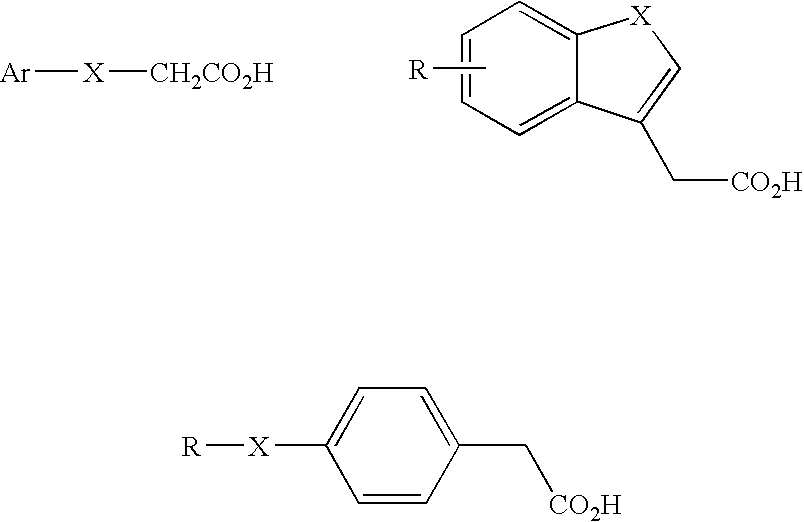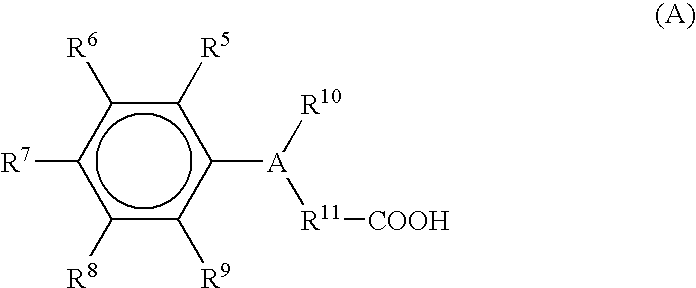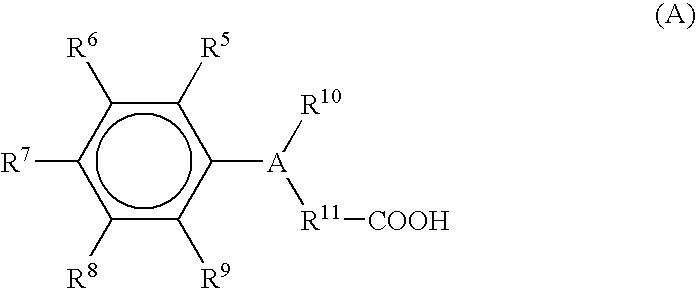Infrared-sensitive composition for printing plate precursors
a technology of infrared-sensitive composition and precursors, which is applied in the direction of thermography, instruments, photosensitive materials, etc., can solve the problems of insoluble products, difficult to deliver doses, and the additional disadvantage of the system described abov
- Summary
- Abstract
- Description
- Claims
- Application Information
AI Technical Summary
Problems solved by technology
Method used
Image
Examples
examples 2 , 3 and 4
EXAMPLES 2, 3 AND 4
[0176] The base coat formulations for examples 2, 3 and 4 were prepared as described in Example 1 except that in place of the Elvacite 4026, poly(methyl methacrylate) polymers (both from Aldrich) with a MW of either 10 K (Example 2) or 30 K (Example 3) or (methyl methacrylate) / methacrylic acid copolymer (from Ineos Acrylics, Inc.) with a MW about 35K (Example 4) were substituted. Each of these polymers had polydispersities from 1-1.8 and an acid number of 0 (Examples 2 & 3) and 9 (Example 4). The base coat was applied and the overcoat prepared and applied as described in Example 1. Plates were imaged and processed as described in Example 1. The minimum exposure energies necessary to achieve maximum processed density were about 35 mJ / cm.sup.2, about 26 mJ / cm.sup.2 and about 40 mJ / cm.sup.2 for Examples 2, 3 and 4, respectively.
COMPARATIVE EXAMPL 1
[0177] In this example, the Elvacite 4026 in Example 1 base coat formulation was substituted by 1.62 parts Jagotex MA 281...
examples 5 , 6
EXAMPLES 5, 6, AND 7
[0179] The base coat formulations for Examples 5, 6 and 7 were prepared as described in Example 1 except that N-phenylgylcine (Eastman Kodak) (Example 5), 1H-1,2,4-triazole-3-thiol (Aldrich) (Example 6) or (2-methoxyphenoxy) acetic acid (Aldrich) (Example 7) was used in place of N-phenyliminodiacetic acid. The base coat was applied and overcoat prepared and applied as described in Example 1. Plates were imaged and processed as described in Example 1. The minimum exposure energies necessary to achieve maximum processed density were about 30 mJ / cm.sup.2, about 30 mJ / cm.sup.2 and about 40 mJ / cm2 for Examples 5, 6 and 7, respectively.
COMPARATIVE EXAMPLES 4, 5, AND 6
[0180] The base coat and overcoat formulations for Comparative Examples 4, 5, and 6 were prepared and coated as described in Comparative Example 1 except that N-phenylgylcine (Eastman Kodak) (Comparative Example 4), 1 H-1, 2, 4-triazole-3-thiol (Aldrich) (Comparative Example 5) or (2-methoxyphenoxy) acetic...
examples 8 , 9 , 10 and 11
EXAMPLES 8, 9, 10 AND 11
[0183] The base coat formulations for Examples 8, 9, 10 and 11 were prepared as described in Example 1 except that in place of 2-(4-methoxyphenyl)-4,6-bis(trichloromethyl)-2-triazine, 2-(4-methylthiophenyl)-4,6-bis(trichlomethyl)-1,3,5-triazine (Lancaster) (Example 8), 2-methoxy-4-(phenylamino)benzenediazonium hexafluorophosphate (Example 9), diphenyl iodonium hexafluorophosphate (prepared according to the method of J. Crivello et al., J. Org. Chem., Vol. 43, 3055 (1978)) (Example 10) or 2,2'-bis(o-chlorophenyl)-4,5,4',5'--tetraphenyl biimidazole (Charkit Chemical Corp.) (Example 11) was substituted. The base coat was applied and overcoat prepared and applied as described in Example 1. Plates were imaged and processed as described in Example 1. The minimum exposure energies necessary to achieve maximum processed density were about 26 mJ / cm.sup.2, about 47 mJ / cm.sup.2 and about 108 mJ / cm.sup.2 for Examples 8, 9, and 10, respectively. An image was produced when...
PUM
| Property | Measurement | Unit |
|---|---|---|
| Fraction | aaaaa | aaaaa |
| Fraction | aaaaa | aaaaa |
| Fraction | aaaaa | aaaaa |
Abstract
Description
Claims
Application Information
 Login to View More
Login to View More - R&D
- Intellectual Property
- Life Sciences
- Materials
- Tech Scout
- Unparalleled Data Quality
- Higher Quality Content
- 60% Fewer Hallucinations
Browse by: Latest US Patents, China's latest patents, Technical Efficacy Thesaurus, Application Domain, Technology Topic, Popular Technical Reports.
© 2025 PatSnap. All rights reserved.Legal|Privacy policy|Modern Slavery Act Transparency Statement|Sitemap|About US| Contact US: help@patsnap.com



